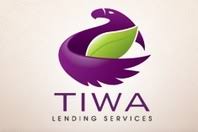
Nonprofit microlenders seek to help their clients not only with the small loans they provide. They also hope to use the ensuing loan repayments to bolster clients’ credit histories and broaden clients’ access to credit in general.
However, microlenders sometimes struggle to master the technical process of accurately reporting clients’ loan payments to the credit bureaus that maintain credit histories. Credit Builders Alliance (CBA) has addressed this problem by creating a Rapid Response Team (RRT) to help organizations quickly begin reporting their customers’ loan performance. The RRT, developed in 2015-2016 with the support of the MetLife Foundation, has demonstrated that in-person technical assistance is effective in helping these organizations overcome the hurdles that otherwise delay their entry into credit reporting.
In CBA’s experience, many nonprofit lenders wait more than a year, and sometimes several years, before becoming credentialed data furnishers. During these delays, their clients’ loan repayments are essentially invisible to other lenders and cannot be used to establish or enhance clients’ credit histories. In addition, most credit bureaus require new credit data furnishers to produce a test file within 90 days of initiating the required credentialing process. If a prospective reporting organization does not produce a test file within this time period, it will need to restart the process.
Over the last three years, CBA has found that the RRT accelerates nonprofits’ initiation of credit reporting. The RRT’s face-to-face and onsite work with nonprofit staff has been instrumental in launching the reporting relationship. During a site visit, a CBA trainer discusses the Fair Credit Reporting Act, credit reporting language, and best practices for credit reporting. RRT members often help the nonprofit enter the necessary codes into their software while reviewing the process for generating a standard credit reporting (or Metro 2®) file. Ideally, the trainer can assist the host with generating their first test file and transmitting it to the credit bureaus.
What follows are summaries of the experiences of two Native Community Development Financial Institutions that invited the RRT to help them start reporting their loan portfolios to the major credit bureaus. The impacts were significant. At one CDFI, some members’ credit scores went up by 100 points. At the other, credit scores were built up through small starter loans that then led to larger loans.
Tiwa Lending Services

The mission of Tiwa Lending Services (TLS) is to promote the economic growth of the Isleta Pueblo Community in New Mexico. TLS staff became interested in credit reporting after they realized that many of their borrowers could benefit from a report of positive credit behavior. The majority of their clients were classified as subprime borrowers, typically with FICO® credit scores in the 550 to 580 range. These low scores were frequently related to one or more significant blemishes on their credit report, such as a medical debt collection. TLS believed that their credit-builder loan product would be a great way to report something positive about borrowers who successfully repaid their loans. This loan product has two phases. The first is a $500 loan, which helps those who are “credit invisible” to establish credit. After proving their ability to manage this initial loan, clients advance to a larger credit-builder loan in phase two.
When the RRT arrived, TLS staff were nervous about the serious responsibility of accurately reporting their borrowers’ payment histories to the credit bureaus. However, they reported smooth sailing during the site visit and became comfortable with their ability to take on the credit reporting process afterwards. Currently TLS reports 130 borrowers’ payments to the credit bureaus monthly.
With credit reporting up and running, TLS’s credit counseling sessions became an even more important auxiliary component of their overall lending program. During these sessions, TLS staff explain that they will be reporting the borrower’s loan payment performance to the credit bureaus each month, making it even more important to pay on time. Staff also explain that as the borrower’s credit score rises, they may qualify for additional services, such as TLS’s home loan program or refinancing of an existing car loan at a lower interest rate.

The Sequoyah Fund
The Sequoyah Fund primarily serves the Eastern Band of Cherokee Indians on the Qualla Boundary and throughout the seven westernmost counties of North Carolina. When the Sequoyah Fund started out, it did not use credit reports to underwrite loans. After a while, however, management concluded that they had an obligation to help their borrowers advance to where they didn’t need the Sequoyah Fund anymore. They wanted their business borrowers, for example, to be able to access additional capital from larger lenders, to qualify for insurance at competitive rates, and to become bonded. The way for the Sequoyah Fund to help them take these steps was to begin credit reporting.
The Sequoyah Fund’s typical borrower is 40 to 50 years old and lacks a credit history. Even if the borrower has a loan through the tribe’s mortgage program, payments are not being reported to the credit bureaus. Adding to the lack of credit history, most borrowers do not have credit cards, and they purchase their cars with cash. Helping them build positive credit histories is a big financial step forward.
When Sequoyah Fund decided to start credit reporting, staff informed existing borrowers well in advance to give those who were behind in their payments sufficient time to become current. Sequoyah Fund discovered that delinquencies dropped markedly after this announcement. Borrowers said they were eager to finally have a convenient way to start building a credit history.
Sequoyah Fund staff regarded the RRT visit as essential to their transition into credit reporting. They wanted to be sure they managed the credit reporting process correctly. Afterwards, they reported that the training had been very helpful and exactly what they needed. They had invited a few other nonprofit lenders as guests. The guests were interested in credit reporting too but wanted to see what would be involved. One of the guests, Mountain Biz Works, Inc., is now also an active credit reporter.
Sequoyah Fund staff found that after they started the credit reporting process, the average credit score of the borrowers in their portfolio increased. In some instances, an increase of 100 points was recorded.
Scheduling a Visit
Thanks to an ongoing grant, CBA continues to offer RRT visits free to CBA members. The goal is to help more Native CDFIs to engage in credit reporting. Current reporters have seen significant benefits accrue to their clients and to their own business operations, in the form of fewer late payments and reduced charge-offs. CBA’s team of almost a dozen master trainers is available to visit any member organization interested in becoming a credit reporter. Contact membership@creditbuildersalliance.org to start the process.





